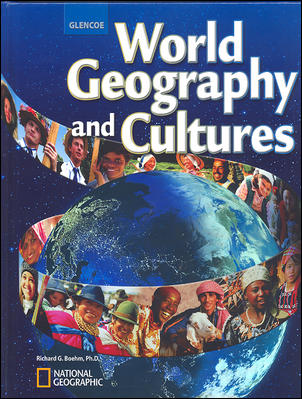
World Geography and Cultures © 2008Chapter 12: Cultural Geography of EuropeChapter OverviewsEurope is a heavily populated continent, with most people living in cities concentrated in geographically favorable areas. The countries have diverse histories and cultures. While each country tries to maintain its national identity, the region is moving toward European unity.Northern Europe Northern Europe includes many ethnic groups and cultures. It is densely populated, due to its temperate climate and fertile soil. The Roman’s helped shape Northern Europe by building towns, roads and cities. They also brought Christianity to the subregion. Invading groups took over the region after the Romans. In the 1700s the Enlightenment brought forth limited government. The Industrial Revolution transformed the region from an agricultural society to an industrial society. Northern Europe is home to strong democracies that belong to the European Union. The subregion is home to Indo-European languages, Protestant Christians and important literary works. Western Europe While some countries in the region were once ethnically homogenous, migration patterns have allowed numerous ethnic groups to thrive throughout the region. Western Europe is densely populated and heavily urban. The Roman Empire spread across Western Europe. After its fall, the Franks, a Germanic group, established a Christian kingdom. The Holy Roman Empire of Western and Central Europe engaged in the Crusades. The Reformation challenged the power of the Catholic Church. Two world wars took place in Western Europe. After World War II, Germany was divided into Communist East Germany and democratic West Germany. They reunited after the fall of the Soviet Union. Countries in this subregion joined the EU. Artistic movements such as realism, and impressionism grew out of Western Europe. The subregion is mostly Roman Catholic. The region has a high standard of living. Southern Europe Southern Europe has a diverse population. The subregion’s proximity to the sea has given it a long history of emigration. Most of the population is settled near coastal areas. Southern Europe is home to the Greek and Roman civilizations that serve as the foundation for Western civilization. They introduced the ideas of democracy, and made breakthroughs in government and law. The Renaissance began in Italy and spread throughout Europe. Throughout the 1800s and 1900s wars and instability marked the region. Today the region has democratic governments that have joined the EU. The region is dominated by Romance languages. It has a strong artistic tradition. Eastern Europe Most Eastern Europeans are Slavic. The density of Eastern Europe varies according to how fertile the soil is and whether there is access to water resources. Slavs migrated from Asia and dispersed throughout Eastern Europe. The region was taken over by the Romans, and then became part of the Byzantine Empire. Much of the region became Eastern Orthodox. After World War II the Soviet Union took over most of Eastern Europe. Most of the countries installed democratic leaders after the fall of the Soviet Union. Yugoslavia fractured along ethnic lines, and violence broke out in some areas. Recently many countries have joined the European Union. Slavic and Baltic languages are common in the region. Traditional art and music exist throughout the region. |  |















